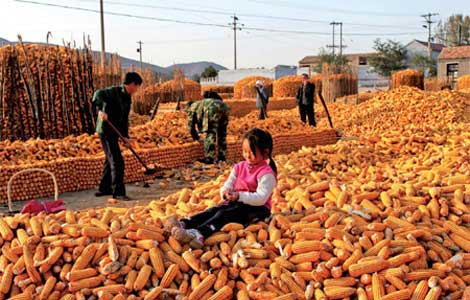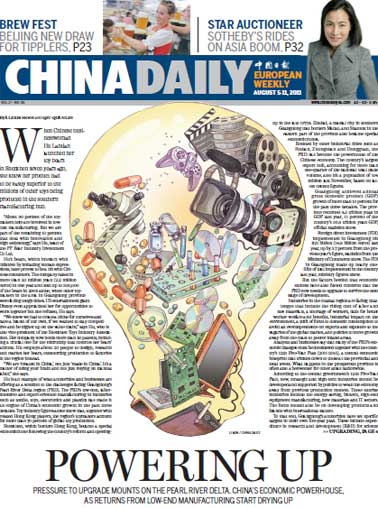Society
Company may miss cleanup deadline
Updated: 2011-08-06 07:50
By Wang Qian and Zhou Yan (China Daily)
BEIJING - ConocoPhillips China, the operator of two platforms that have released oil in Northeast China's Bohai Bay, may face stricter penalties if it misses the deadline for cleaning up the leak, an official with the State Oceanic Administration warned on Friday.
On July 31, the State Oceanic Administration urged the company to clean up the oil-polluted seabed by Sunday and to submit a report on the progress of that project by next Wednesday.
The administration stressed on Friday again that the company must complete the cleanup of the oil leak before Aug 31. In addition, the Sunday and Wednesday deadline must be met, or a reasonable explanation will be needed to the Chinese government and the public.
However, the Houston-based energy company reported one day after the administration's July 31 statement that more oily mud had been discovered and the work may have to be delayed.
According to the its latest statement on Friday, the company had discovered 32 cubic meters of oil-based drilling mud near a leaking platform on Wednesday and Thursday.
"Thirty-two cubic meters equals 201 barrels," John McLemore, spokesman for ConocoPhillips, told China Daily on Friday.
The new discovery of leaked oil means the total volume of the oil leak is likely to be about 1,700 barrels, much more than the previous estimate of 1,500 barrels.
Small and intermittent oil seepages have been detected in the two platforms since August, the statement released on Friday by the North China Sea Branch of the State Oceanic Administration said.
The new discovery will "definitely delay the company's cleanup work and the deadlines that were set cannot be met", said the administration official, who spoke on condition of anonymity.
He said the longer the work is delayed and the more drilling mud discovered, the more ConocoPhillips will have to pay in compensation.
He also complained that ConocoPhillips has displayed a "bad attitude" while undertaking the cleanup.
In response, McLemore said the Aug 7 deadline was to be the time by which the company would have the original 180 cubic meters of drilling mud cleaned up. That task, he said, was completed on Aug 3.
"We have not had any injuries related to this incident, and we will continue to operate in a safe manner," he said. "That's true even if it means the cleanup may take longer than planned, which it most likely will with the discovery of the additional mud."
To clean up the drilling mud, the company has employed five diving vessels piloted by a team of more than 100 professionals.
Eight experts sent by the North China Sea Branch of the State Oceanic Administration went to the Penglai 19-3 oilfield to monitor the cleanup process on Thursday.
At its largest extent, the leak polluted 3,240 square kilometers of seawater in Bohai Bay, according to the administration.
The three provinces and one municipality around the bay - Hebei, Shandong, Liaoning and Tianjin - have reported discoveries of fresh oil belts in seawater or dried oil drops ashore after the leak on June 4.
Oil experts also said the company has failed to explain the disaster well.
"The information released by ConocoPhillips has been too opaque and contained very few details, which makes it difficult to gauge the effects of the spill," said Chen Jianmin, a professor at the College of Petroleum Engineering at China University of Petroleum.
He called on the company to state the thickness of the oil sheen, the exact position of the newly detected oily mud, how the mud was created and other such information.
China Daily
(China Daily 08/06/2011 page3)
E-paper

My Chinese Valentine
Local businesses are cashing in on a traditional love story involving a cow herder and a goddess
Outdoor success
Lifting the veil
Allure of mystery
Specials

Sowing the seeds of doubt
The presence in China of multinationals such as Monsanto and Pioneer is sparking controversy

Lifting the veil
Beijing's Palace Museum, also known as the Forbidden City, is steeped in history, dreams and tears, which are perfectly reflected in design.

Beer we go
Early numbers not so robust for Beijing's first international beer festival
